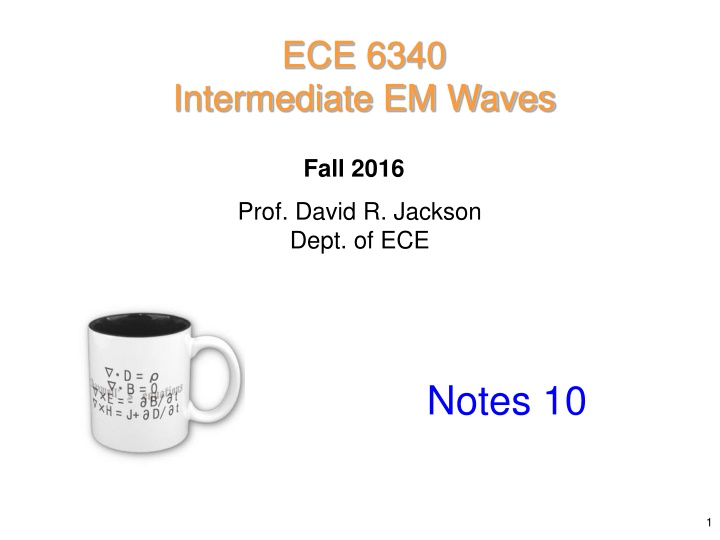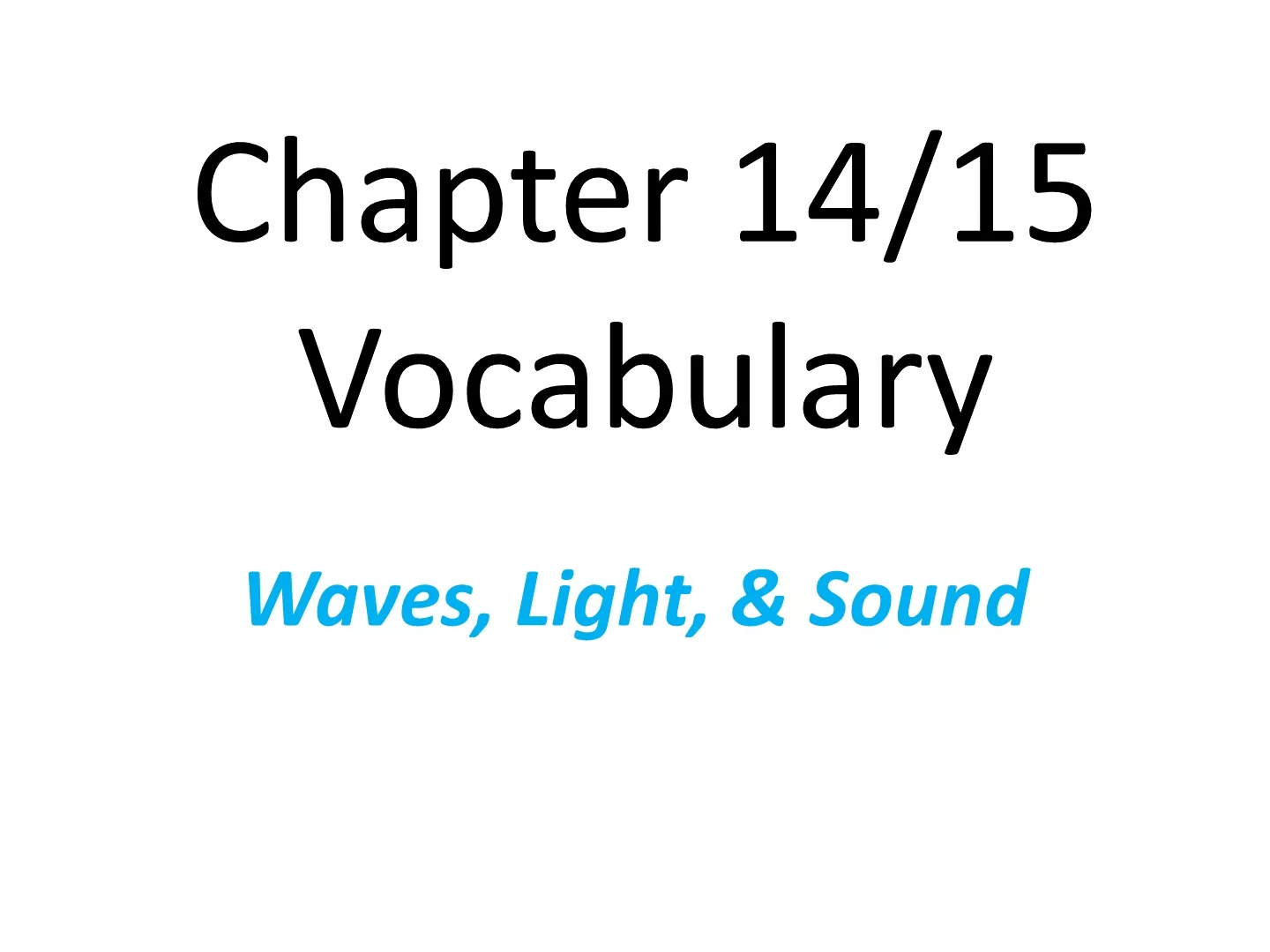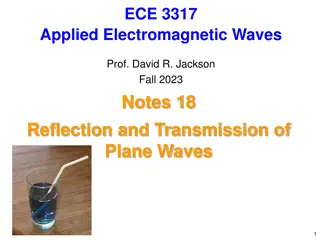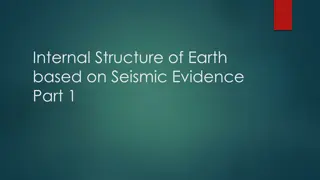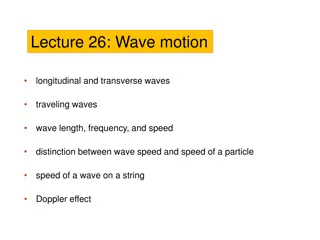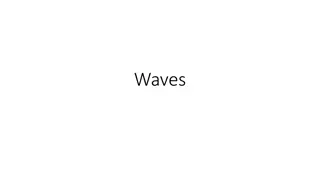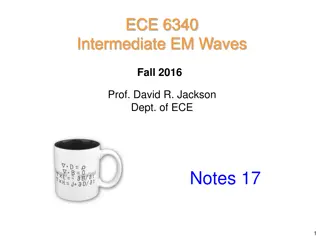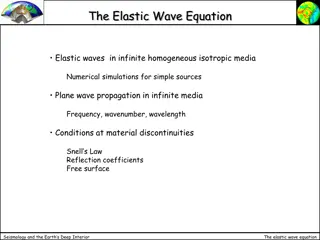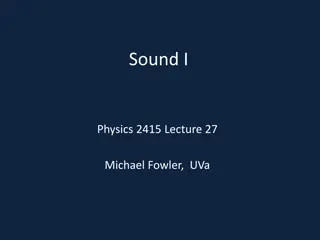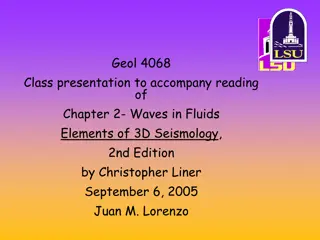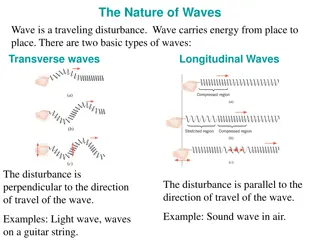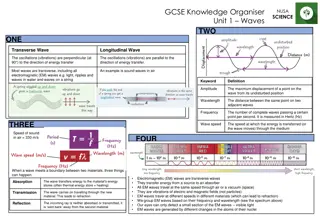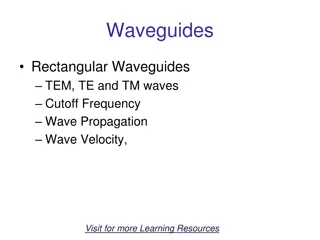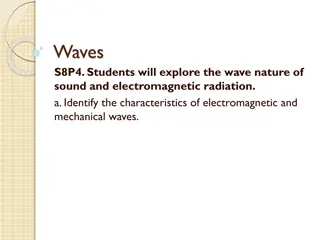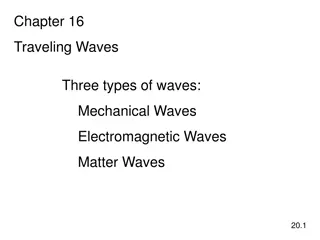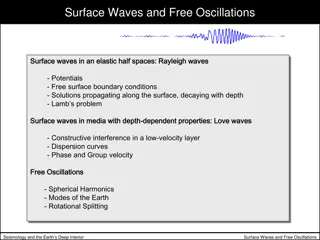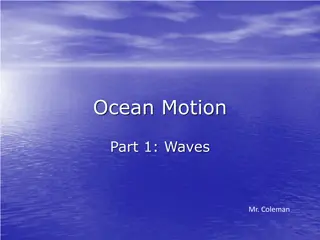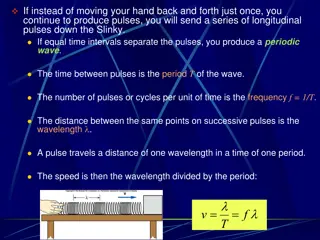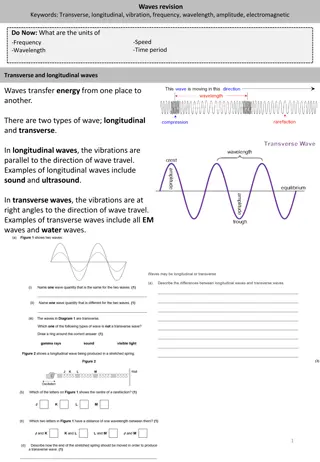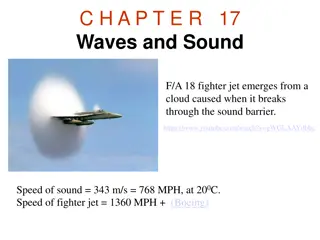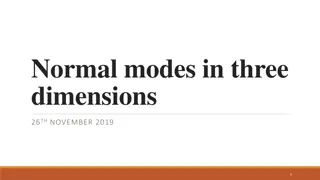Intermediate EM Waves: Vector Wave Equations and Waveguide Fields
The vector wave equations and waveguide fields in intermediate electromagnetic waves, as discussed in Prof. David R. Jackson's fall 2016 ECE 6340 course notes. Learn about the wave equation, Laplacian, Helmholtz equation, and wave impedance in the context of electromagnetic wave propagation.
Download Presentation

Please find below an Image/Link to download the presentation.
The content on the website is provided AS IS for your information and personal use only. It may not be sold, licensed, or shared on other websites without obtaining consent from the author.If you encounter any issues during the download, it is possible that the publisher has removed the file from their server.
You are allowed to download the files provided on this website for personal or commercial use, subject to the condition that they are used lawfully. All files are the property of their respective owners.
The content on the website is provided AS IS for your information and personal use only. It may not be sold, licensed, or shared on other websites without obtaining consent from the author.
E N D
Presentation Transcript
ECE 6340 Intermediate EM Waves Fall 2016 Prof. David R. Jackson Dept. of ECE Notes 10 1
Wave Equation i i = = The region is source free and homogeneous. 0 , 0 J M Assume = = E H j H so j E c ( ) ( ( ) = = E j H Then we have ) j j E c = 2 2 k Use c ( ) Vector Wave Equation = 2 0 E k E Hence 2
Wave Equation (cont.) ( ) = 2 0 H k H Similarly, Taking the divergence, ( ) = 2 0 E k E ( ) = 2 0 E k E = 0 E Hence, Hence v= 0 in the time-harmonic steady state for a homogeneous material, provided 0. The zero-divergence condition is built in to the vector wave equation. 3
Vector Laplacian ( ) ( ) 2V V V Recall In rectangular coordinates, = + + 2 2 2 2 x y z V V V V x y z The vector wave equation can thus be written as ( ) = 2 2 0 E E k E E or + = 2 2 0 E k E Vector Helmholtz Equation 4
Vector Laplacian (cont.) Take the rectangular components: + + = = 2 2 0 E k E x x 2 2 0 E k E y y + = 2 2 0 E k E z z Note: is not implied from the 0 E = vector Helmholtz Equation. (see the example later) 5
Waveguide Fields From the guided-wave theorem, the fields of a guided wave varying as exp(-jkzz) may be written in terms of the longitudinal (z) components as H y H x jk E x E y j = E z z z x 2 2 z 2 2 z k k k k jk j = E z z z y 2 2 z 2 2 z k k k k j E y E x jk H x H y = c H z z z x 2 2 z 2 2 z k k k k j jk = c H z z z y 2 2 z 2 2 z k k k k 6
Waveguide Fields (cont.) These may be written more compactly as j jk ( ) ( ) = z k E z H E z z t t t 2 2 z 2 2 z k k k j jk ( ) ( ) = z k H z E H c z z t t t 2 2 z 2 2 z k k k 7
Waveguide Equations (cont.) For the special case of TEz and TMz fields, we can combine these as follows: E = 0 z j jk ( ) ( ) = z k E z H E z z t t t 2 2 z 2 2 z k k k TEz Combine j jk ( ) ( ) = z k H z E H c z z t t t 2 2 z 2 2 z k k k E = 0 z 8
Waveguide Equations (cont.) j 2 2 z k k = E z H 2 z t t 2 k k jk z ( ) z H = t k z = TE Z Define the wave impedance: k z ( ) = z H E TE Then we have Z t t 9
Waveguide Equations (cont.) Summary for TEz and TMz cases: ( ), TE = z H E TE Z Fields t t z ( ), TM = z H E TM Z Fields t t z k = TE = TM Z Z z k z c Note: For a wave going in the z direction, we replace the minus sign with a plus sign. 10
Waveguide Equations (cont.) z Taking the cross product of both sides with gives us 1 TE ( ) = + z E H , TE Fields t t z Z 1 TM ( ) = + z E H , TM Fields t t z Z Note: For any transverse vector we have ( ) z V = z V t t Note: For a wave going in the z direction, we replace the plus sign with a minus sign. 11
Waveguide Equations (cont.) For the special case of a TEM wave: = zk k = = = = TE Z k k z c k k = = = = c TM Z z c c c = = TE TM Z Z (TEM wave) 12
Example: Spurious TE00 Mode y Rectangular Waveguide + = 2 2 0 E k E + z z b x = 2 2 0 H k H a z z In this example we show that the TE00 mode of the rectangular waveguide is non-physical, since it violates the divergence condition. 13
Example (cont.) Solution from separation of variables (given later): y 2 2 m n = 2 k k z a b b x a m x a m x a n y b n y b = jk z TMmn: sin sin E E e z 0 z = jk z cos cos H H e TEmn: z 0 z 14
Example (cont.) Question: What is the lowest-order mode (smallest m and n) for a non-trivial field? m x a m x a n y b n y b = jk z sin sin E E e TMmn: z 0 z = jk z cos cos H H e TEmn: z 0 z TMmn: m = 1, n = 1 TEmn: m = 0, n = 0 ? 15
Example (cont.) TEmnmode: m x a n y b 2 2 m n = jk z 0cos cos H H e = 2 k k z z z a b TE00mode: = = jkz H H H e H 0 z = 0 x y The last equation holds since the normal component of the magnetic field is zero on the PEC, and there is no (x, y) variation inside the waveguide. H n = 0 16
Example (cont.) Check the divergence: H H H y = + + x H z The TE00 mode is a non-physical mode. x jk H e y z = jkz 0 0 H Hence (invalid mode) The TE10mode is actually the mode with the lowest cut-off frequency. Whenever we solve the vector Helmholtz equation, we should check to make sure that the divergence condition is satisfied! It turns out that all of the other modes of the rectangular waveguide are physical. 17
